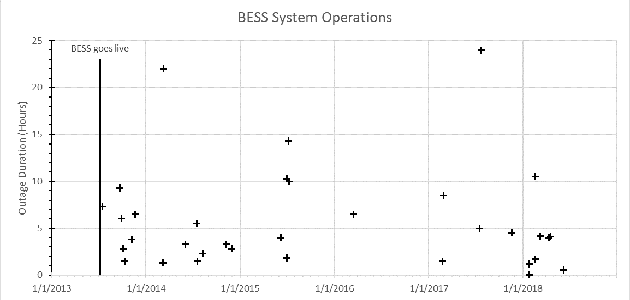At Last, the Secret to Radial Outages Revealed
Back to Top
Throughout virtually all parts of the world, small, often-isolated communities are fed electricity through single radial feeders, many stretching for miles and miles. As one might suspect, these long feeder lines are especially vulnerable to outages caused by any of a wide variety of issues, resulting in customers periodically facing long periods of time without power while the utility identifies the cause of the fault and then fixes the line.
The small town of Field, British Columbia, Canada, was one such community. Located 55 kilometers (34 miles) from the substation, its feeder runs along a railway line, making access and repair work difficult, time-consuming, and costly. To address constant outages along the line, BC Hydro, the utility serving Field, in 2013 installed a battery energy storage (BESS) facility 5 kilometers (3 miles) south of the town of 169 residents that supplies uninterruptible power for up to approximately seven hours when the main feeder goes down.
The installation continues to demonstrate just how effective a microgrid can be in solving outage problems along long radial feeders. Between July 2013 and June 2018, BC Hydro data show, power along the Field radial feeder was disrupted 34 times for a total of 196 hours, the equivalent to a little more than eight days. Many of the disruptions, whose causes included brush fires, avalanches, vehicles hitting poles, and fallen trees and tree branches, lasted longer than five hours, as shown below:

Source: BC Hydro
However, because of the microgrid’s battery backup, most of the disruptions did not affect Field’s electricity customers, and those that did were much shorter in duration, proving how a microgrid can effectively and instantly solve or reduce power-disruption problems along radial feeders.
Other utilities should look at BC Hydro’s and Field’s experience and consider how their worst performing radial feeders could similarly benefit. Since BC Hydro created its microgrid, the technology has gotten more and more economical. While these effective microgrids started in the most extreme cases, the falling prices for the technology should make battery back-up protection a regular tool in every distribution engineer’s toolkit.
I’d be interested in learning your thoughts on how a microgrid could help your utility improve performance along its worst-performing feeder in the Comments section below.